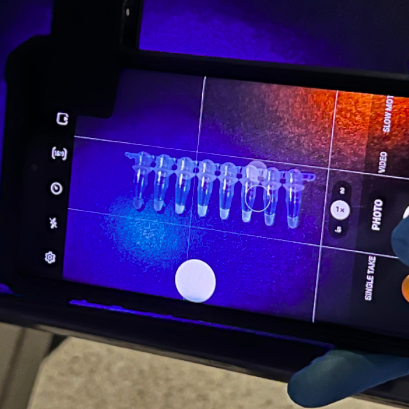

Research Terms
Biotechnology Environmental Sciences Life Sciences
Keywords
Aerobiology Alphavirus Flavivirus Paramyxovirus Respiratory Viruses Virology Zika Virus
Industries


This device enables preparation of collected RNA and DNA samples for enrichment, amplification, and analysis, allowing point-of-care detection of infectious microorganisms. International travel and dense city populations increase the ability of infectious diseases, such as Zika or influenza viruses, to cause global epidemics. Infectious airborne diseases are particularly fatal and cause over 5 million annual deaths worldwide. Current viral and bacterial detection procedures rely upon isolating RNA to differentiate strains and determine treatment approaches. However, present detection mechanisms such as culture and nucleic acid amplification, such as polymerase chain reactions, are time-consuming, require a controlled environment and specific equipment, or cannot evaluate small samples of microorganisms, rendering their use unrealistic outside of a lab.
Researchers at the University of Florida have developed a sample preparation device for isolating nucleic acids from viruses and bacteria. Combining sequential nucleic acid purification, amplification and analysis systems allows detection of microorganism DNA and RNA in the field.
Samples of collected microorganisms filter into a lysis chamber, where they are stripped down to their component nucleic acids. Once isolated, the genetic material moves to the purification chamber. The sample then strains through a collector in the chamber, which prepares DNA or RNA for the purification process. A mechanical coupling mechanism links the collector unit with the adjacent buffer unit, allowing immersion of genetic material within the chamber into multiple liquids. Inside the device, ball-bearing valves release one binding buffer and two wash buffers in sequence. The sample then detaches for heating, allowing DNA or RNA to amplify into millions of copies of the genetic material. Once the heating cycle ends, colorimetric dyes can stain the sample, allowing for further observation and detection of the purified nucleic acids. Journal article: Jiang, X., Loeb, J., Manzanas, C., Lednicky, J., & Fan, Z. (2018). Valve-enabled Sample Preparation and RNA Amplification in a Coffee Mug for Zika Virus Detection. Angewandte Chemie International Edition. doi: 10.1002/anie.201809993
This integrated bioaerosol sampling and detection system enlarges airborne biological nanoparticles to enable accurate, on-site detection of airborne viruses in real time. Many of the diseases that affect human or animal populations and agricultural production have epidemic potential and spread via air dispersed with biological particles, called bioaerosols. Performing bioaerosol sampling and analysis of possibly contaminated air is critically important in limiting the spread of these diseases. However, available bioaerosol sampling devices are very ineffective at sampling virus aerosols. Since virus particles are much smaller than those of bacteria and fungi, available bioaerosol samplers capture very few virus particles, which leads to non-representative air samples. Additionally, available bioaerosol sampling devices require time-consuming analyses and do not support on-site virus detection, increasing the chances of disease outbreak.
Researchers at the University of Florida have developed a bioaerosol sampling system, integrated with nanoparticle analysis capabilities, that efficiently detects viruses in the air. The system is easy to use and supports real-time, on-site diagnosis of airborne pathogens to improve medical response time and disease control.
Rapid aerosol sampling unit that detects airborne viruses for both ambient air-quality monitoring and on-site contamination analysis of public indoor and outdoor facilities, such as schools, hospitals, clinics, airports, parks, animal farms and military conflict zones
This bioaerosol sampling unit detects the presence of virus bioaerosols within a sample, while improving the overall sampling efficiency. The unit consists of two interconnected components: a Virus Aerosol Amplification Unit (VAU) and a Nucleic Acid Sequence Based Amplification Assay (NASBA) or paper-based immunoassay. Ambient air, containing bioaerosols, enters into a chamber within the amplification unit by either a pump or a suction motor. The unit cultivates and amplifies the bioaerosol particles by performing various cooling, swirling, and mixing motions, increasing the overall concentration of the sample. Next, in the NASBA or immunoassay, microfluidic devices quickly detect virus DNA and RNA found within the captured bioaerosols of the amplified sample. Manufacturers may also include type-specific nucleic acid assays that detect a particular viral particle.






























































































































































Environmental and Global Health College of Public Health and Health Professi UNIVERSITY OF FLORIDA GAINESVILLE, FL 32608
